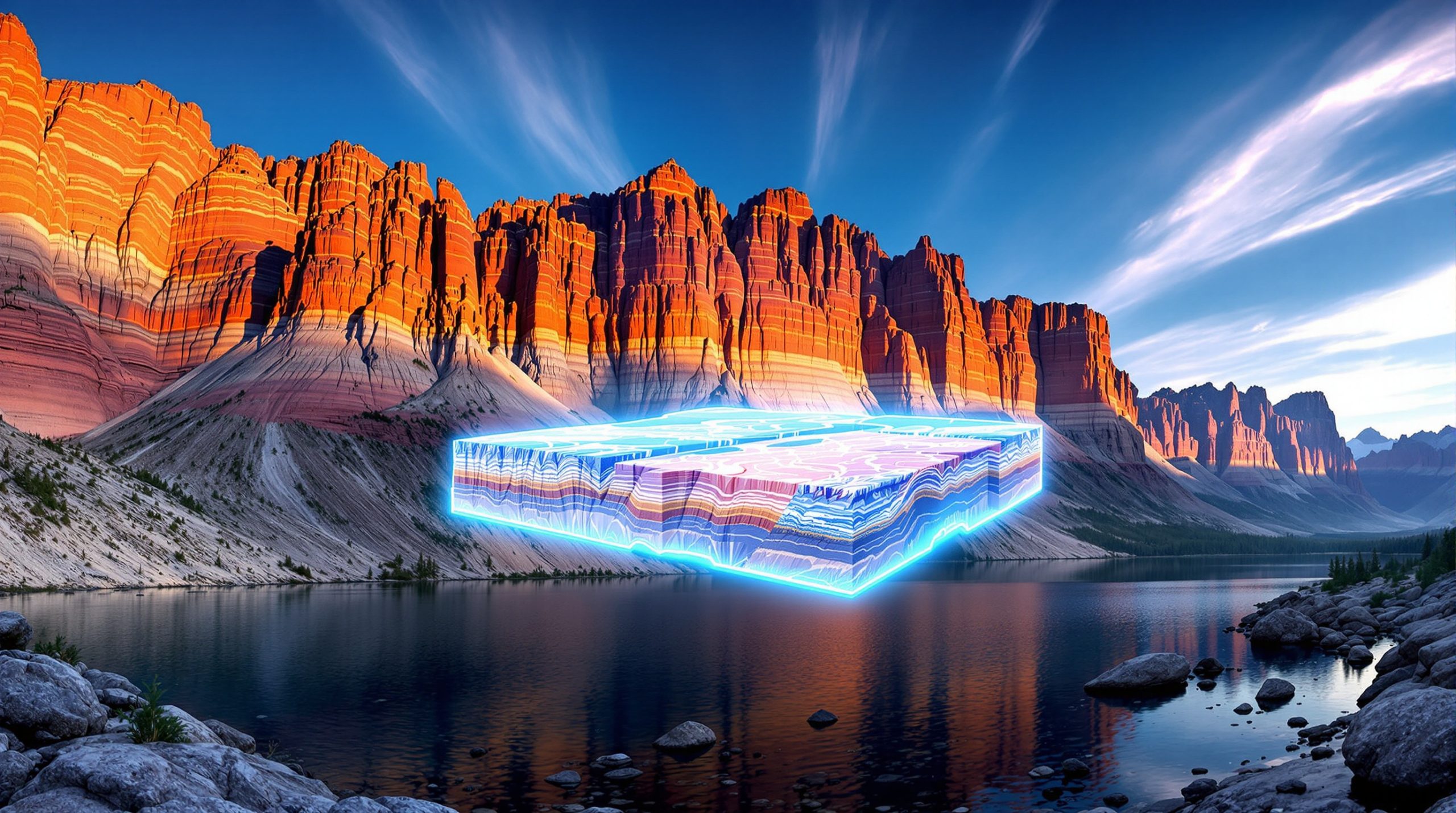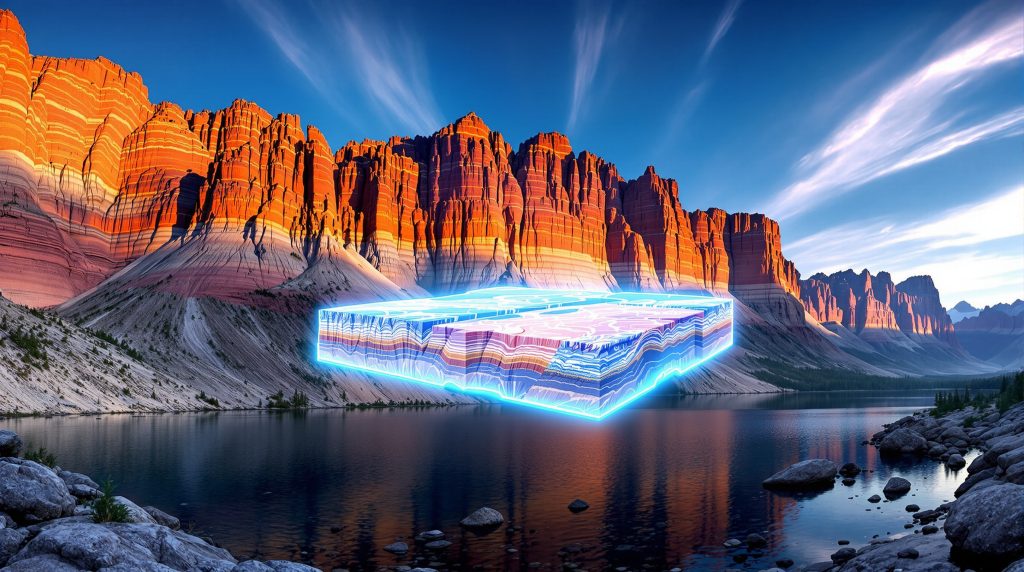Exploring the Precambrian Belt Supergroup: Paleogeography and Continental Connections The Belt Supergroup represents one of Earth's most remarkable and well-preserved Precambrian sedimentary sequences, spanning approximately 1.47 to 1.40 billion years ago during the Mesoproterozoic era. This extraordinary geological formation stretches across western Montana, northern Idaho, eastern Washington, and extends northward into Canada (where it's known as the Purcell Supergroup). What makes the Belt Supergroup particularly fascinating is its exceptional preservation, remarkable thickness (reaching 15-20 kilometers in places), and the insights it provides into ancient continental configurations during a pivotal period in Earth's history. These rocks formed during the existence of the supercontinent Nuna (also called Columbia), offering crucial evidence about continental relationships that existed over a billion years ago. The Belt Supergroup represents a key geological puzzle piece for understanding Earth's ancient geography. Professor Rich Gashnig of University of Massachusetts Lowell explains that these rocks formed during the supercontinent Nuna period, with breakup occurring around 1.3 billion years ago based on paleomagnetic evidence showing Australia was distant by 1.2 billion years ago. How Did the Belt Basin Form? The Belt Basin developed as an enormous intracontinental rift basin within the supercontinent Nuna around 1.5 billion years ago. Unlike a fully developed ocean basin, evidence suggests it was more comparable to modern analogues like the Caspian Sea or Lake Baikal—large, deep water bodies formed through crustal extension but without complete continental separation. Several key characteristics define the formation process: Rapid sedimentation: The lower portions of the Belt sequence accumulated remarkably quickly, with thousands of meters of sediment deposited in just millions of years—geologically speaking, this represents extremely rapid deposition Extensional tectonics: The basin formed through crustal stretching and thinning, creating accommodation space for sediments Contemporaneous magmatism: Mafic sills intruded the sediments during deposition, particularly in the lower Belt units, indicating active extension Fault-bounded margins: The basin was defined by major fault systems that controlled subsidence and sedimentation patterns Rather than representing a fully successful rifting event that created an ocean, the Belt Basin appears to represent a "failed rift"—an extensional basin that never progressed to complete continental separation. This interpretation challenges earlier models that suggested a Red Sea-type environment with an opening ocean. Recent research shows the Pritchard Formation, which is over 5 kilometers thick, was deposited extremely rapidly. The near-vertical timeline in age-dating studies indicates an enormous volume of sedimentary material accumulated in a remarkably short geological timeframe. What Rocks Make Up the Belt Supergroup? The Belt Supergroup consists of a remarkably thick succession of predominantly fine-grained sedimentary rocks that can be divided into four main stratigraphic divisions: Lower Belt (Pritchard Formation) The lowermost unit, dominated by the Pritchard Formation, consists primarily of: Deep-water turbidites (underwater landslide deposits) Fine-grained sandstones and siltstones Numerous mafic sills intruded contemporaneously with sedimentation Total thickness reaching several kilometers The Pritchard Formation represents the deepest water conditions of the Belt Basin, with sedimentary structures indicating deposition by turbidity currents in a relatively deep basin setting. Geologists note that its immense thickness (over 5 km) means it technically should be classified as a group rather than a formation. Ravalli Group Overlying the Lower Belt, the Ravalli Group marks a significant shallowing of the basin and includes: Red beds with abundant mud cracks Evidence of wetting and drying cycles Shallow water sedimentary structures Predominantly sandy and silty sediments These features suggest deposition in shallow water environments with periodic exposure to air, representing a major environmental shift from the deep-water conditions of the Pritchard Formation. Piegan Group (Middle Belt Carbonate) The middle portion of the Belt sequence includes: Extensive carbonate deposits Famous stromatolite fossils (evidence of ancient microbial communities) "Molar tooth" structures (enigmatic carbonate features) Sandy materials toward the western margin The Piegan Group represents relatively shallow marine or lacustrine conditions favorable for carbonate deposition and microbial mat development. Some of the most famous stromatolites in Glacier National Park are found in this unit. Missoula Group The uppermost division consists of: Predominantly sandy and silty sediments Well-preserved ripple marks and other shallow-water features Evidence of alluvial fan systems Additional stromatolite horizons The Missoula Group records continued shallow water deposition with significant terrigenous input from surrounding highlands. Remarkably preserved ripple marks from this unit are approximately 1.4 billion years old, providing tangible evidence of ancient shoreline environments. What Does Detrital Mineral Analysis Reveal About the Belt's Origins? Modern analytical techniques examining the age and chemistry of detrital minerals (particularly zircon, monazite, and rutile) have revolutionized our understanding of the Belt Supergroup's origins and paleogeographic connections. Zircon Age Patterns Detrital zircon geochronology reveals striking patterns: Lower Belt (Pritchard Formation): Contains abundant zircons with ages between 1610-1620 million years—a time period known as the "North American magmatic gap" when few zircon-producing igneous rocks were forming in North America Ravalli Group: Shows similar zircon age patterns to the Pritchard, suggesting continued supply from similar source regions Upper Belt (Missoula Group): Displays markedly different zircon age patterns dominated by ~1.7 billion-year-old grains, consistent with sources in southwestern North America This dramatic shift in sediment provenance suggests a fundamental reorganization of drainage patterns and/or tectonic configuration during Belt deposition. The crucial discovery is that the dominant zircon population in the Lower Belt lacks North American sources that would be rich in zircons, indicating material from exotic continental sources. Multi-Mineral Chronology Beyond zircon dating, analysis of other uranium-bearing minerals provides additional dimensions of information: Monazite ages: This rare earth element phosphate mineral forms primarily during high-grade metamorphism, providing information about metamorphic events in source regions Rutile ages: This titanium oxide mineral records cooling below approximately 500°C, offering insights into when source regions were exhumed toward Earth's surface The differences between zircon, monazite, and rutile age patterns reveal complex histories of the source terrains that supplied sediment to the Belt Basin. Recent research has identified significant age offsets between these minerals in the Missoula Group, showing metamorphic events that post-date the major granite formation events in the southwestern United States. How Does the Belt Supergroup Connect to Australia and Antarctica? Perhaps the most fascinating aspect of Belt Supergroup research involves its paleogeographic implications for ancient continental configurations. Multiple lines of evidence suggest connections between western North America and parts of present-day Australia and Antarctica during Belt deposition: Evidence for Australian Connections Detrital zircon signatures: The distinctive 1610-1620 Ma zircon population in the Lower Belt closely matches known igneous provinces in Australia, particularly the Gawler Craton in South Australia Tasmanian correlations: Remarkable similarities exist between: The Rocky Cape Group in Tasmania and the Missoula Group of the Belt Metamorphic rocks adjacent to the Rocky Cape Group containing mafic sills of identical age to those in the Pritchard Formation Paleogeographic reconstructions: Paleomagnetic data supports Australia's proximity to western North America during the appropriate time period, though it appears Australia had moved away by approximately 1.2 billion years ago Recent research has uncovered striking connections between Tasmania and the Belt Basin. The Rocky Cape Group in Tasmania has been correlated with the Missoula Group, while adjacent metamorphic rocks in Tasmania contain mafic sills that are the exact same age as those found in the Pritchard Formation. The Tasmania Connection Tasmania appears to have occupied a critical "bridge position" between western North America and mainland Australia during Belt deposition. The geological record in Tasmania preserves evidence of both: Sedimentary sequences correlative with the Belt Supergroup Metamorphic rocks with intrusive relationships matching those in the Lower Belt This suggests Tasmania may represent the western margin of the Belt Basin, providing a crucial link in reconstructing Mesoproterozoic paleogeography precambrian belt supergroup. The discovery of these correlations has been bolstered by recent studies in Tasmanian geology that were published contemporaneously with new Belt Supergroup research. What Happened After Belt Deposition? The geological record following Belt deposition becomes significantly more sparse, creating challenges for reconstructing the complete history. Key post-depositional events include: Continental reorganization: By approximately 1.2 billion years ago, paleomagnetic evidence indicates Australia had moved away from western North America Rodinia assembly: Around 1.1-1.0 billion years ago, the supercontinent Rodinia formed, potentially bringing Australia and Antarctica back into proximity with North America but in somewhat different configurations Metamorphic overprinting: The Belt rocks experienced variable metamorphism, with some areas preserving remarkably pristine sedimentary features while others underwent significant thermal alteration Rodinia breakup magmatism: Much younger mafic sills and dikes, dating to around 700-780 million years ago, intrude the Belt rocks as part of the "Gunbarrel" magmatic province associated with Rodinia's breakup Thrust faulting: During the Mesozoic-Cenozoic Sevier-Laramide orogenies, much of the Belt Supergroup was transported eastward along the Lewis Thrust, placing these ancient rocks above much younger Cretaceous sediments An interesting recent discovery is that many of the prominent sills visible in places like Glacier National Park and Grand Teton National Park (such as the striking black band on Mount Moran) are not related to the original Belt Basin formation but instead represent much younger magmatic events tied to Rodinia's breakup around 700-780 million years ago. Why Are the Belt Rocks So Well Preserved? The exceptional preservation of sedimentary structures in the Belt Supergroup, including delicate features like ripple marks and mud cracks that have survived for over a billion years, results from several factors: Absence of bioturbation: The lack of burrowing organisms in Precambrian environments meant sedimentary structures remained undisturbed after deposition Early lithification: Many Belt sediments underwent relatively rapid cementation, helping to preserve primary features Thermal alteration: Moderate heating associated with burial and intrusion of igneous bodies enhanced the rocks' durability without destroying primary structures Limited deformation: Despite their great age, many Belt rocks experienced surprisingly little structural deformation, particularly in areas like Glacier National Park where they remain nearly flat-lying This remarkable preservation allows geologists to read the Belt rocks almost like pages in a book, providing an unparalleled window into Earth's distant past. Modern research confirms that while the rocks have "been baked to some degree" making them harder, many primary features remain exceptionally intact. What Makes the Belt Supergroup Important for Understanding Earth History? The Belt Supergroup holds special significance for several reasons: Supercontinent reconstructions: It provides critical evidence for testing models of the Nuna (Columbia) and Rodinia supercontinents Precambrian environments: The exceptional preservation offers insights into depositional environments during a time when Earth's surface conditions differed markedly from today Early life: Stromatolites and other potential microbial signatures in the Belt rocks contribute to our understanding of life's evolution during the Precambrian Basin dynamics: The extraordinary thickness and completeness of the Belt sequence makes it an exceptional natural laboratory for studying long-term basin evolution Continental connections: Detrital mineral studies reveal ancient connections between continents now separated by thousands of kilometers of ocean By integrating multiple analytical techniques—from traditional field geology to cutting-edge mineral chemistry and geochronology—researchers continue to extract new insights from these ancient rocks, refining our understanding of Earth's paleogeography precambrian belt supergroup during a critical chapter in its history. A particularly intriguing connection is between the Franklin large igneous province in the Yukon and Rodinia breakup events. Some researchers link the eruption of these massive volcanic provinces to later "snowball Earth" glaciation events, suggesting complex interconnections between tectonics, magmatism, and climate during this period. How Can We Visit and Observe the Belt Supergroup Today? The Belt Supergroup is spectacularly exposed in several accessible locations across the northwestern United States: Glacier National Park, Montana: Perhaps the most famous exposures, where colorful Belt rocks form dramatic mountains and cliffs. The Going-to-the-Sun Road provides excellent access to these formations. Cabinet Mountains, Montana/Idaho: Rugged wilderness areas with extensive Belt exposures, particularly of the lower units. Coeur d'Alene District, Idaho: Famous for its mineral deposits hosted in Belt rocks, this area offers both mining history and geological interest. Lewis and Clark Caverns State Park, Montana: Showcases caves formed in the carbonate units of the Belt Supergroup. Sun River Canyon, Montana: Provides excellent exposures of Belt stratigraphy along a scenic river corridor. When visiting these locations, look for distinctive features like: Ripple marks preserved on bedding surfaces Mud cracks indicating ancient drying events Stromatolites representing some of Earth's oldest ecosystems Striking color variations between different Belt formations Mafic sills appearing as dark bands cutting through the sedimentary layers These accessible exposures allow both professional geologists and interested visitors to directly observe evidence of Earth's conditions more than a billion years ago. While the Belt Supergroup is remarkably thick throughout the region, the Idaho panhandle contains some of the thickest sequences, though these areas are structurally complex due to later faulting and deformation. Note to geology enthusiasts: When visiting Glacier National Park, remember that the prominent black sill visible in many locations is actually much younger (approximately 700-780 million years old) than the Belt rocks themselves, representing a separate magmatic event tied to the breakup of the later supercontinent Rodinia. The study of these ancient rocks continues to evolve as new drilling exploration results and analytical techniques provide fresh insights. Researchers now utilize sophisticated geological logging codes to document observations consistently across the region. Furthermore, various drilling program types have been employed to sample these formations at depth, adding to our three-dimensional understanding of the Belt Basin. Meanwhile, the mining industry evolution has influenced how we extract and interpret data from these ancient rocks, leading to more sophisticated models of Mesoproterozoic paleogeography. Want to Spot the Next Major Mineral Discovery? Discover how to identify significant ASX mineral discoveries before the broader market with Discovery Alert's proprietary Discovery IQ model, turning complex geological data into actionable investment insights. Visit our discoveries page to understand how major mineral discoveries can lead to substantial market returns.

Paleogeography of the Precambrian Belt Supergroup: Ancient Continental Connections
Discover how the ancient Precambrian Belt Supergroup reveals Earth’s paleogeography



